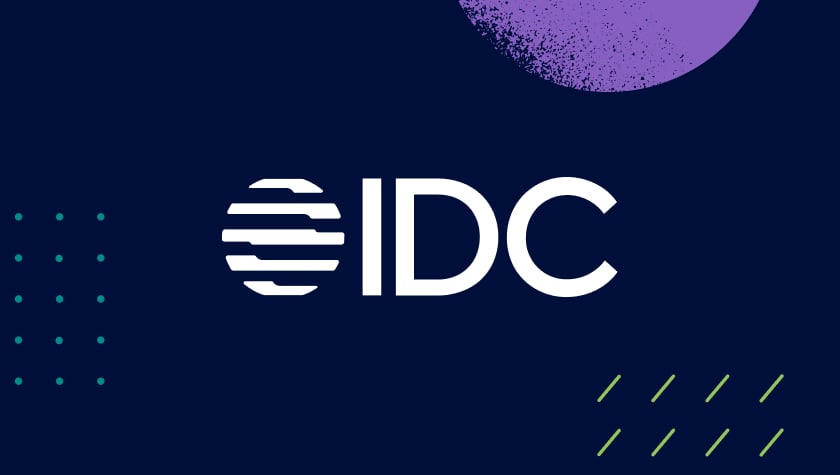
Money20/20 Europe took place in Amsterdam last week, bringing leaders from finance, payments, and FinTech together under one roof. Attending an event like this is a great opportunity to understand what’s on the minds of the world’s most influential payment pioneers - and get a sense of the financial trends that are shaping the future. Here’s a recap of the top fraud and financial crime trends I saw at Money20/20 Europe.
Crypto Is Still at the Forefront of the Conversations
You couldn’t walk very far around Money20/20 Europe without seeing or hearing about cryptocurrency. From the potential impact of central bank digital currencies (CBDCs) to stablecoins, crypto was one of the main buzzwords at this year’s show.
CBDCs would authorize the official usage of national digital currencies. While they are still in developmental stages, countries like Sweden are already investigating the potential to launch their own CBDC.
Crypto also enables instant, low-cost settlement and is seen as playing a key role in cross-border payments. It offers real-time fulfillment and much lower costs than traditional payment methods. This is highly noteworthy for online platforms, marketplaces, and gig economy verticals which are key to driving stablecoin adoption. Earlier this year, for example, property rental marketplace Airbnb noted that its users want to make payments with crypto.
Crypto Wallets Enable APP fraud
However, real-time payments aren’t without their own risks. The quicker payments can move, the more attractive they are to fraudsters, as Starling Bank CEO Anne Boden noted.
“At the moment, crypto is being used by fraudsters,” Boden pointed out. “In countries where you have payment schemes that are real time, you find that customers are being scammed and the scammers are sending money out of the door to crypto wallets. We’re spending far more of our time protecting customers from these scammers than we are trying to promote crypto.”
Boden raises an important question for organizations to consider as they pursue their own cryptocurrency initiatives. The expansion of faster payment systems has contributed to a rise of authorized push payment fraud in many regions. Once they receive these funds, fraudsters often move the money to several different bank accounts (sometimes as many as three or four) before the funds disappear for good.
With traditional fiat currency, defrauded customers at least have a chance to recover their money if the receiving bank quickly performs inbound payment monitoring. However, fraudsters can reduce the necessary number of steps to make their stolen money disappear by transferring money to a crypto wallet where the trail typically goes cold immediately.
“We’re seeing a lot of wallets being connected into payment schemes and this is a threat to the safety of our payment schemes around the world,” said Boden. “My principal concern with crypto is that we have to protect our customers from being scammed across all the banks in Europe.”
Preventing fraud will be key to keeping customers safe as crypto use cases expand. Banks can look to behavioral and biometric solutions to understand how their customers normally act before they fall victim to a scam.
Embedded Finance Is Thriving
Enabling businesses to tap into new revenue streams with embedded finance was another key theme of Money20/20 Europe. Embedded finance tools give businesses access to payment plans, debit cards, and even bank accounts.
These tools are especially helpful for smaller and midsize firms to diversify their revenue streams, as Shopify’s Tui Allen pointed out. Shopify has taken the lead in offering embedded finance products to its customers. Roughly half of Shopify’s revenue now comes from their ability to offer loans to their customers thanks to the vast wealth of transaction data they have available to them. In 2020, they loaned over $1 billion to small businesses. That figure has since grown to over $3 billion.
“Small businesses and entrepreneurs feel very overwhelmed and are underserved,” Allen said. “It’s our opportunity and responsibility to help them, boost them up, so they can provide the services to the economy that we need now more than ever before.”
How Traditional FIs Must Adapt to Support Embedded Finance
The expansion of embedded finance also carries new concerns over how bad actors can exploit it. Regulations for embedded finance are still evolving, something both Scarlett Sieber and Sophie Guibaud noted in their book, Embedded Finance: When Payments Become an Experience, which was launched at the show. This gives organizations an opportunity to cement best practices that will keep both their customers and their customers’ end-users secure.
Take platforms like Delivery Hero, Postmates, or Uber, for example. Each end-user who onboards with the platform represents an entry point into the embedded finance ecosystem. If a fraudster gains access, they can scam businesses and embedded finance providers by taking out fraudulent loans or accessing embedded banking services.
As regulations take shape, companies that provide embedded finance tools need to move beyond traditional fraud, onboarding services, risk, and credit scoring protections. Providers need to look deeper to keep customers secure and understand how both customers and end-users are interacting with the services.
BNPL Is Here to Stay
The continued rise of buy now, pay later (BNPL) services was another topic of discussion at Money20/20 Europe. Tech giant Apple just launched its own BNPL service that allows users to make payments on goods over several installments. This is a clear signal that BNPL is here to stay.
As I’ve noted in an earlier post, BNPL is popular with both consumers and merchants. Consumers can get expensive items and take them home right away while paying for them in several smaller installments over just a few weeks or months. Merchants like it because they can increase their basket values and move more expensive items.
This popularity is putting the global BNPL market on track to reach roughly $680 billion USD by 2025, according to recent research.
Consumers Need BNPL Protection
It’s still not clear how BNPL regulations will shape up, but what is clear is consumers must be protected from harm through initiatives such as affordability checks and more widespread credit bureau reporting across the industry. Klarna, a top leader in BNPL, recently announced they would share data with credit bureaus in the UK, for example.
It’s specifically important to protect BNPL users from threats from account takeover (ATO) fraud. If someone applies for a BNPL service in a legitimate user’s name, the victim may not realize their account or credit has been compromised until it’s too late. Providers must make sure those applying for a BNPL credit are real individuals and that their accounts are not compromised.
The one thing all scams have in common is deception. Download our eBook, How Banks Can Prevent Scams, to learn how to protect customers from some of the most common scam tactics.
Share this article:
James Hunt
James Hunt has over 20 years of experience preventing payment fraud across banking, eCommerce, and payment service providers, specializing in creating, leading, and refining fraud prevention teams. Believing that fraud and risk teams should be an enabler of business and not a bottleneck, he’s consulted with some of the world's largest global brands. Prior to joining Feedzai, James held positions at NatWest, GoCardless, and Visa.
Related Posts
0 Comments6 Minutes
A Guide to Secure, Seamless User Authentication in Payments
Online payments demand a delicate balance between security and user experience. Consumers…
0 Comments7 Minutes
Combating Emerging Scams in the Philippines
The Philippines is witnessing remarkable growth in digital banking. Unfortunately, a…
0 Comments5 Minutes
Feedzai is a Leader in the 2024 IDC MarketScape for Enterprise Fraud Solutions
Exciting news! Feedzai, the world’s first RiskOps platform, is proud to have been named a…

